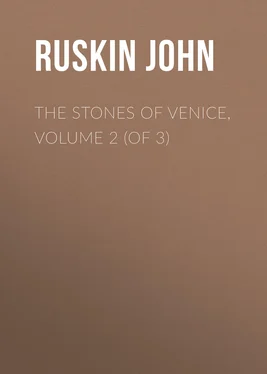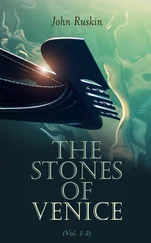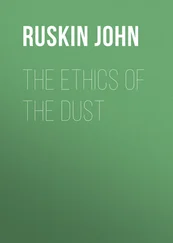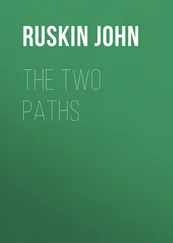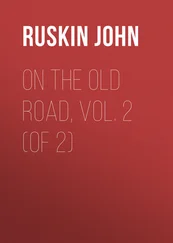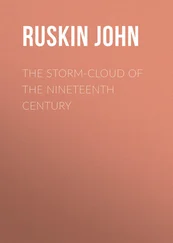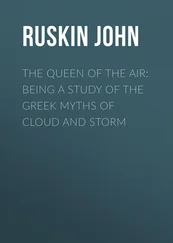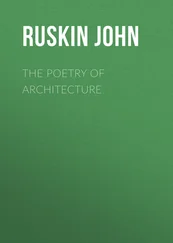John Ruskin - The Stones of Venice, Volume 2 (of 3)
Здесь есть возможность читать онлайн «John Ruskin - The Stones of Venice, Volume 2 (of 3)» — ознакомительный отрывок электронной книги совершенно бесплатно, а после прочтения отрывка купить полную версию. В некоторых случаях можно слушать аудио, скачать через торрент в формате fb2 и присутствует краткое содержание. Жанр: foreign_antique, foreign_home, architecture_book, literature_19, visual_arts, на английском языке. Описание произведения, (предисловие) а так же отзывы посетителей доступны на портале библиотеки ЛибКат.
- Название:The Stones of Venice, Volume 2 (of 3)
- Автор:
- Жанр:
- Год:неизвестен
- ISBN:нет данных
- Рейтинг книги:5 / 5. Голосов: 1
-
Избранное:Добавить в избранное
- Отзывы:
-
Ваша оценка:
- 100
- 1
- 2
- 3
- 4
- 5
The Stones of Venice, Volume 2 (of 3): краткое содержание, описание и аннотация
Предлагаем к чтению аннотацию, описание, краткое содержание или предисловие (зависит от того, что написал сам автор книги «The Stones of Venice, Volume 2 (of 3)»). Если вы не нашли необходимую информацию о книге — напишите в комментариях, мы постараемся отыскать её.
The Stones of Venice, Volume 2 (of 3) — читать онлайн ознакомительный отрывок
Ниже представлен текст книги, разбитый по страницам. Система сохранения места последней прочитанной страницы, позволяет с удобством читать онлайн бесплатно книгу «The Stones of Venice, Volume 2 (of 3)», без необходимости каждый раз заново искать на чём Вы остановились. Поставьте закладку, и сможете в любой момент перейти на страницу, на которой закончили чтение.
Интервал:
Закладка:
§ XII. We find ourselves in a paved alley, some seven feet wide where it is widest, full of people, and resonant with cries of itinerant salesmen,—a shriek in their beginning, and dying away into a kind of brazen ringing, all the worse for its confinement between the high houses of the passage along which we have to make our way. Over-head an inextricable confusion of rugged shutters, and iron balconies and chimney flues pushed out on brackets to save room, and arched windows with projecting sills of Istrian stone, and gleams of green leaves here and there where a fig-tree branch escapes over a lower wall from some inner cortile, leading the eye up to the narrow stream of blue sky high over all. On each side, a row of shops, as densely set as may be, occupying, in fact, intervals between the square stone shafts, about eight feet high, which carry the first floors: intervals of which one is narrow and serves as a door; the other is, in the more respectable shops, wainscoted to the height of the counter and glazed above, but in those of the poorer tradesmen left open to the ground, and the wares laid on benches and tables in the open air, the light in all cases entering at the front only, and fading away in a few feet from the threshold into a gloom which the eye from without cannot penetrate, but which is generally broken by a ray or two from a feeble lamp at the back of the shop, suspended before a print of the Virgin. The less pious shop-keeper sometimes leaves his lamp unlighted, and is contented with a penny print; the more religious one has his print colored and set in a little shrine with a gilded or figured fringe, with perhaps a faded flower or two on each side, and his lamp burning brilliantly. Here at the fruiterer’s, where the dark-green water-melons are heaped upon the counter like cannon balls, the Madonna has a tabernacle of fresh laurel leaves; but the pewterer next door has let his lamp out, and there is nothing to be seen in his shop but the dull gleam of the studded patterns on the copper pans, hanging from his roof in the darkness. Next comes a “Vendita Frittole e Liquori,” where the Virgin, enthroned in a very humble manner beside a tallow candle on a back shelf, presides over certain ambrosial morsels of a nature too ambiguous to be defined or enumerated. But a few steps farther on, at the regular wine-shop of the calle, where we are offered “Vino Nostrani a Soldi 28·32,” the Madonna is in great glory, enthroned above ten or a dozen large red casks of three-year-old vintage, and flanked by goodly ranks of bottles of Maraschino, and two crimson lamps; and for the evening, when the gondoliers will come to drink out, under her auspices, the money they have gained during the day, she will have a whole chandelier.
§ XIII. A yard or two farther, we pass the hostelry of the Black Eagle, and, glancing as we pass through the square door of marble, deeply moulded, in the outer wall, we see the shadows of its pergola of vines resting on an ancient well, with a pointed shield carved on its side; and so presently emerge on the bridge and Campo San Moisè, whence to the entrance into St. Mark’s Place, called the Bocca di Piazza (mouth of the square), the Venetian character is nearly destroyed, first by the frightful façade of San Moisè, which we will pause at another time to examine, and then by the modernizing of the shops as they near the piazza, and the mingling with the lower Venetian populace of lounging groups of English and Austrians. We will push fast through them into the shadow of the pillars at the end of the “Bocca di Piazza,” and then we forget them all; for between those pillars there opens a great light, and, in the midst of it, as we advance slowly, the vast tower of St. Mark seems to lift itself visibly forth from the level field of chequered stones; and, on each side, the countless arches prolong themselves into ranged symmetry, as if the rugged and irregular houses that pressed together above us in the dark alley had been struck back into sudden obedience and lovely order, and all their rude casements and broken walls had been transformed into arches charged with goodly sculpture, and fluted shafts of delicate stone.
§ XIV. And well may they fall back, for beyond those troops of ordered arches there rises a vision out of the earth, and all the great square seems to have opened from it in a kind of awe, that we may see it far away;—a multitude of pillars and white domes, clustered into a long low pyramid of colored light; a treasure-heap, it seems, partly of gold, and partly of opal and mother-of-pearl, hollowed beneath into five great vaulted porches, ceiled with fair mosaic, and beset with sculpture of alabaster, clear as amber and delicate as ivory,—sculpture fantastic and involved, of palm leaves and lilies, and grapes and pomegranates, and birds clinging and fluttering among the branches, all twined together into an endless network of buds and plumes; and, in the midst of it, the solemn forms of angels, sceptred, and robed to the feet, and leaning to each other across the gates, their figures indistinct among the gleaming of the golden ground through the leaves beside them, interrupted and dim, like the morning light as it faded back among the branches of Eden, when first its gates were angel-guarded long ago. And round the walls of the porches there are set pillars of variegated stones, jasper and porphyry, and deep-green serpentine spotted with flakes of snow, and marbles, that half refuse and half yield to the sunshine, Cleopatra-like, “their bluest veins to kiss”—the shadow, as it steals back from them, revealing line after line of azure undulation, as a receding tide leaves the waved sand; their capitals rich with interwoven tracery, rooted knots of herbage, and drifting leaves of acanthus and vine, and mystical signs, all beginning and ending in the Cross; and above them, in the broad archivolts, a continuous chain of language and of life—angels, and the signs of heaven, and the labors of men, each in its appointed season upon the earth; and above these, another range of glittering pinnacles, mixed with white arches edged with scarlet flowers,—a confusion of delight, amidst which the breasts of the Greek horses are seen blazing in their breadth of golden strength, and the St. Mark’s Lion, lifted on a blue field covered with stars, until at last, as if in ecstasy, the crests of the arches break into a marble foam, and toss themselves far into the blue sky in flashes and wreaths of sculptured spray, as if the breakers on the Lido shore had been frost-bound before they fell, and the sea-nymphs had inlaid them with coral and amethyst.
Between that grim cathedral of England and this, what an interval! There is a type of it in the very birds that haunt them; for, instead of the restless crowd, hoarse-voiced and sable-winged, drifting on the bleak upper air, the St. Mark’s porches are full of doves, that nestle among the marble foliage, and mingle the soft iridescence of their living plumes, changing at every motion, with the tints, hardly less lovely, that have stood unchanged for seven hundred years.
§ XV. And what effect has this splendor on those who pass beneath it? You may walk from sunrise to sunset, to and fro, before the gateway of St. Mark’s, and you will not see an eye lifted to it, nor a countenance brightened by it. Priest and layman, soldier and civilian, rich and poor, pass by it alike regardlessly. Up to the very recesses of the porches, the meanest tradesmen of the city push their counters; nay, the foundations of its pillars are themselves the seats—not “of them that sell doves” for sacrifice, but of the vendors of toys and caricatures. Round the whole square in front of the church there is almost a continuous line of cafés, where the idle Venetians of the middle classes lounge, and read empty journals; in its centre the Austrian bands play during the time of vespers, their martial music jarring with the organ notes,—the march drowning the miserere, and the sullen crowd thickening round them,—a crowd, which, if it had its will, would stiletto every soldier that pipes to it. And in the recesses of the porches, all day long, knots of men of the lowest classes, unemployed and listless, lie basking in the sun like lizards; and unregarded children,—every heavy glance of their young eyes full of desperation and stony depravity, and their throats hoarse with cursing,—gamble, and fight, and snarl, and sleep, hour after hour, clashing their bruised centesimi upon the marble ledges of the church porch. And the images of Christ and His angels look down upon it continually.
Читать дальшеИнтервал:
Закладка:
Похожие книги на «The Stones of Venice, Volume 2 (of 3)»
Представляем Вашему вниманию похожие книги на «The Stones of Venice, Volume 2 (of 3)» списком для выбора. Мы отобрали схожую по названию и смыслу литературу в надежде предоставить читателям больше вариантов отыскать новые, интересные, ещё непрочитанные произведения.
Обсуждение, отзывы о книге «The Stones of Venice, Volume 2 (of 3)» и просто собственные мнения читателей. Оставьте ваши комментарии, напишите, что Вы думаете о произведении, его смысле или главных героях. Укажите что конкретно понравилось, а что нет, и почему Вы так считаете.
